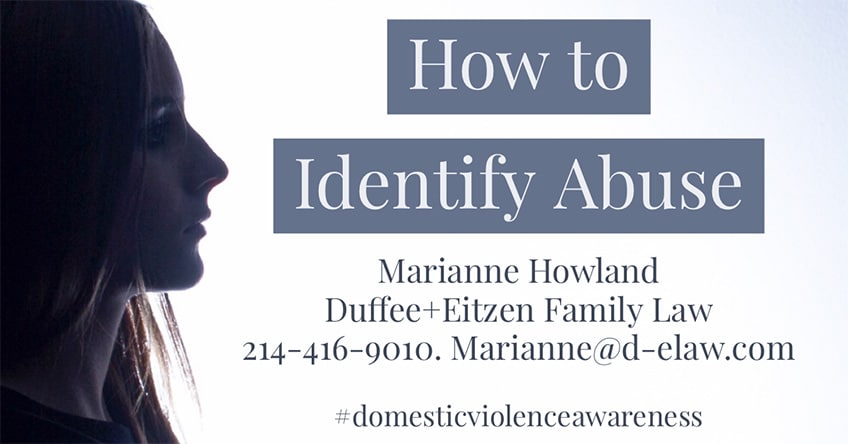How to Identify Abuse

- Written by Duffee + Eitzen Administrator
- Categorised Covid, Abuse
How to Identify Abuse
It is a common misconception that only certain types of people end up in abusive relationships. Unfortunately, this is not true. It is true that only certain types of people are abusers. But anyone can experience abuse. Women, children, and even men, can experience abuse at the hands of a certain type of person.
Abusers are typically, but not always, men. An abuser is someone who engages in pattern of control and isolation. Abusers cross the spectrum of educational, ethnic, economic and religious backgrounds. The commonality between abusers is a belief that they are entitled to control and isolate another human. They believe in using violence, using defense mechanisms to justify their abusive behavior, and blaming the victim for their violence and abuse. They often exhibit extreme jealousy. They do not abuse because they are out of control. They are all about control. Think about how abusers behave in public, at work, at church, etc. If they get upset with their boss, they do not typically grab their boss by the throat and threaten his or her life. Abusers know exactly what they are doing. They have learned this behavior because they have seen it work. They have seen abuse, either in their home, in their school, with their peers, or even in the media, as an effective way to control someone. And they desire that control.
It is important to understand that the abuser is the one with the dysfunctional personality, not the victim. A person who is abused did not bring that abuse on themselves. That person does not have a personality that draws abusers to them. The abuser is the one that society should focus on to prevent continued cycles of abuse.
The abusive cycle of isolation and control and violence does not typically start out with physical aggression. It typically starts slowly with expressions of jealousy, comments about what you are wearing and who you spend time with, requests to check your phone, email, and/or social networks. Some of this behavior can seem romantic at first. The abuser loves you so much that they are jealous and want you all to themselves, they want you to spend all of your time with them, etc. Do not be fooled. This behavior is unhealthy and dangerous. And it will, almost definitely, escalate.
There are several recognized types of abuse to be aware of. These include emotional abuse, financial abuse, digital abuse, physical abuse, sexual abuse, isolation, and stalking.
Emotional abuse can include threatening to kill themselves if you don’t do something they want, blaming you for their abusive behavior, name-calling, threats to hurt your animals and/or loved ones. Financial abuse can include monitoring your credit, debit cards, and bank accounts, giving you an “allowance,” and not allowing you access to money. Digital abuse can consist of checking your phone, emails, and/or social media without your permission, changing your passwords without your permission, and posing as you and sending messages from your phone, email, and/or social media without your permission, etc. Physical abuse can start by slamming doors, throwing things, punching walls, blocking your exit or entrance, hurting your pets, and can escalate to physical attacks such as slapping, punching, pushing and choking. Sexual abuse can include coercing you into doing things that you are not comfortable with and can escalate to rape. Isolation includes bad-mouthing your friends and family to you, telling you that they don’t care about you, telling you that you are worthless, and monitoring and punishing you for spending time with anyone other than the abuser. Stalking includes repeatedly watching you, following you, harassing you with unwanted texts, letters, emails, voicemails, sending unwanted gifts, calling your friends, family, and/or employers, and using others to try to get information about you.
If you are experiencing any of these forms of abuse, you should come up with a safety plan immediately so that when you are ready, you can leave immediately with a clear plan in place.
[National Domestic Violence Hotline 1-800-799-7233]
About the Author:
Marianne Howland is a Partner with Duffee + Eitzen.
She previously worked as the on-site attorney at The Family Place and at Genesis Women’s Shelter helping victims of domestic violence with their legal needs. She is advocate for women and children who are victims of domestic violence and abuse, and is available for speaking engagements on the topic.
October is #domesticviolenceawareness month. Please share this article with anybody you feel it may help.
Marianne can be reached at marianne@d-elaw.com


Contact Us